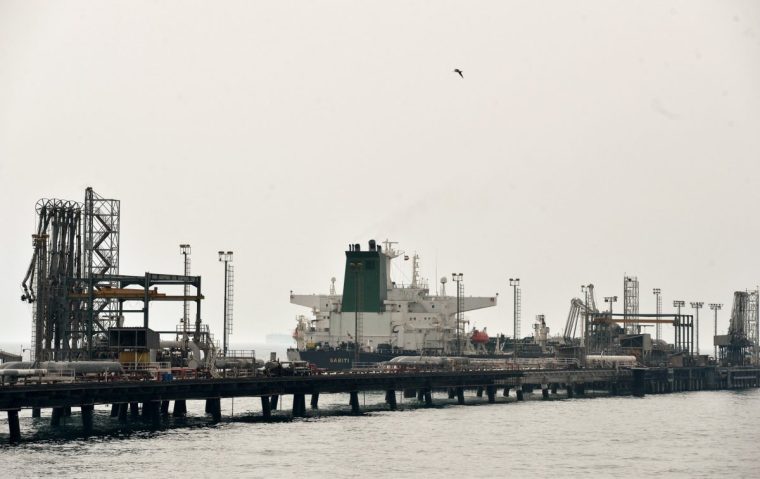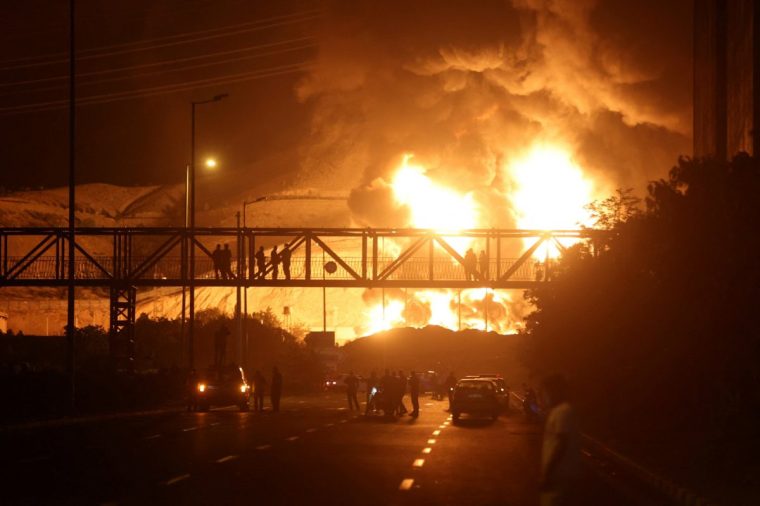The conflict between Israel and Iran spread to energy infrastructure on Saturday, igniting concerns about the impact on oil prices
An Israeli strike on Iran‘s Kharg oil terminal could increase petrol prices and inflation, experts have warned.
Growing Israeli attacks on Iranian oil and gas facilities have raised speculation that the Kharg terminal, which handles an estimated 90 per cent of Iran’s oil exports, could be a key target.
According to the Cenral Bank of Iran, Iran exported $67bn (£49bn) worth of oil between March 2024-25, a record amount and emphasises how integral the Kharg terminal is.
The conflict between the two countries spread from nuclear to energy infrastructure on Saturday as Israel unleashed more air strikes.
Iran partially suspended production at South Pars – the world’s largest gas field and the source of two-thirds of Iran’s gas production – after an attack caused a fire there on Saturday.
The gasfield accounts for nearly 20 per cent of known global reserves of recoverable gas.
The strikes led to significant damage and fire at the natural gas processing facility and halted an offshore production platform that generates 12 million cubic metres per day, according to the semi-official Tasnim news agency in Iran.
Fires also broke out at the Shahran oil depot in the capital city of Tehran and at the Fajr Jam gas plant, one of Iran’s largest processing facilities, after they were hit.

But Homayoun Falakshahi, senior analyst for crude oil at Kpler, a research firm, said: “There is one clear target that would make it very easy if Israel or the United States wanted to impact Iran’s oil exports. And this is Kharg Island.”
Tony Jordan, senior partner at energy analysts Auxilione, said a potential attack on the Kharg terminal would likely fuel further oil price rises as markets react to the uncertainty over supplies.
He said oil rises already seen in the past week “will impact prices at the pump” and transport costs will increase.
He told The i Paper: “The more that companies are exposed to those prices, the more they have to put their prices up in order to maintain [profit] margins.
“Product prices generally go up, so then we start getting into that inflation loop again and the cost of goods starts going up for your typical consumer.”
Jordan said there will probably be an increase in energy prices as markets react to the volatility seen over the weekend.
Energy bills are more closely linked to the price of natural gas rather than oil and are less vulnerable to the conflict than petrol prices, he added.

Jordan added if energy and transport costs go up, that is likely to feed into the price of food and other consumer goods, which then increases inflation.
Fears about potential disruption to the region’s oil exports had already driven up oil prices 9 per cent on Friday, even though Israel spared Iran’s oil and gas industry on the first day of its attacks.
It is possible that other countries could increase oil production to compensate for any disruption to Iranian supplies, which would then limit price rises, Jordan added.
The Chancellor told Sky News rising oil prices in the past week are a “cause for concern”.
The price of the benchmark Brent crude rose more than 10 per cent on Friday, reaching its highest level since January, before losing some gains.
Rachel Reeves told the BBC there is “no complacency” from the Treasury on the issue and “we’re obviously monitoring this very closely as a government”.
She added that “the concerns are around shipping routes, both for oil and gas exports, but also more widely, because as so much goods trade passes through the Middle East, so obviously we’re following this closely”.
Inflation already rose to 3.5 per cent in the year to April – its highest level in more than a year.
The Consumer Prices Index, a measure of inflation, rose from 2.6 per cent in March and was higher than economists had expected.
The war in Ukraine helped push inflation to a high of 11.1 per cent in October 2022 causing oil and food prices to rise as countries moved away from importing Russian energy supplies.
Attacks by Iran-backed Houthi rebels in the Red Sea also disrupted global supply chains causing higher fuel costs and therefore increase food prices.
While the initial impact of Israel’s attack on the west remain unclear, S&P Global Market Intelligence previously said nearly 15 per cent of goods imported into Europe, the Middle East and North Africa are shipped from Asia and the Gulf by sea, particularly through the vital Straight of Hormuz.
Luke Bosdet, spokesman at motoring group the AA, said the jump in oil prices will push up petrol prices that had fallen between February and June.
The wholesale cost of petrol rose 3p a litre in the past week, the AA said.
Bosdet said the extent of price rises will depend on whether retailers price competitively and how much demand for gasoline comes from the US, where the economy has slowed.
